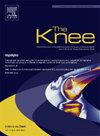关节镜后膝关节骨坏死的组织病理学检查:镜检回顾
IF 2
4区 医学
Q3 ORTHOPEDICS
引用次数: 0
摘要
背景:关节镜后膝关节骨坏死(PONK)最初是在没有任何组织病理学证据的情况下根据磁共振成像(MRI)的发现来描述的。然而,一些作者已经证明,在诊断为PONK后再次手术的患者的组织学样本中没有坏死。本研究的目的是评估和综合与PONK病例的组织病理学特征相关的现有文献,并确定相关术语的适当性。方法对PubMed、Scopus和Cochrane进行符合prisma标准的范围审查。研究报告对推定诊断为PONK的患者采集的骨样本进行组织学分析。提取一般研究特征、影像学和MRI特征、关节镜和组织学取样之间的时间间隔以及骨样本的组织学分析结果。结果纳入5篇文章,共22例患者(23个膝关节,平均年龄63.5岁),获得17份骨标本进行组织学检查。最常见的发现是存在软骨下不全性骨折(SIF)(94.1%),坏死仅报告一例。结论:由于大多数组织病理学检查未见坏死,“PONK”一词似乎不足以描述相应的临床情况。考虑到所分析骨样本的病理特征,在诊断和处理这些病例时应考虑SIF和PONK,直到获得更明确的证据。本文章由计算机程序翻译,如有差异,请以英文原文为准。
Histopathological examination of post-arthroscopy osteonecrosis of the knee: a scoping review
Background
Post-arthroscopy osteonecrosis of the knee (PONK) was originally described based on magnetic resonance imaging (MRI) findings in the absence of any histopathological evidence. However, several authors have demonstrated the absence of necrosis in histological samples of patients undergoing reoperation after diagnosis of PONK. The aim of this study was to evaluate and synthesize the available literature related to the histopathological characteristics of PONK cases and to determine the appropriateness of related terminology.
Methods
A PRISMA-compliant scoping review of PubMed, Scopus, and Cochrane was performed. Studies reporting histological analyses performed on bone samples harvested from patients with a presumptive diagnosis of PONK were included. General study characteristics, radiographic and MRI features, time elapsed between arthroscopy and histological sampling, and results of histological analysis of the bone samples were extracted.
Results
Five articles were included, for a total of 22 patients (23 knees, mean age 63.5 years), resulting in 17 bone samples available for histological examination. The most common finding was the presence of subchondral insufficiency fractures (SIF) (94.1%), with necrosis being reported only in one case.
Conclusions
Due to the absence of necrosis in most histopathological examinations, the term “PONK” seems inadequate to describe the corresponding clinical condition. Considering the pathological features of the analysed bone samples, SIF should be considered along with PONK when diagnosing and managing these cases until more definitive evidence becomes available.
求助全文
通过发布文献求助,成功后即可免费获取论文全文。
去求助
来源期刊

Knee
医学-外科
CiteScore
3.80
自引率
5.30%
发文量
171
审稿时长
6 months
期刊介绍:
The Knee is an international journal publishing studies on the clinical treatment and fundamental biomechanical characteristics of this joint. The aim of the journal is to provide a vehicle relevant to surgeons, biomedical engineers, imaging specialists, materials scientists, rehabilitation personnel and all those with an interest in the knee.
The topics covered include, but are not limited to:
• Anatomy, physiology, morphology and biochemistry;
• Biomechanical studies;
• Advances in the development of prosthetic, orthotic and augmentation devices;
• Imaging and diagnostic techniques;
• Pathology;
• Trauma;
• Surgery;
• Rehabilitation.
 求助内容:
求助内容: 应助结果提醒方式:
应助结果提醒方式:


